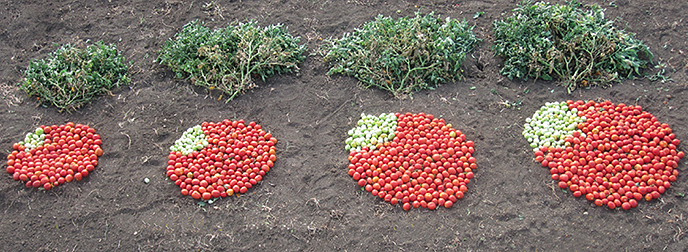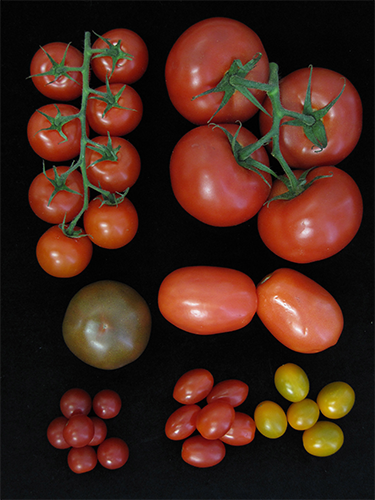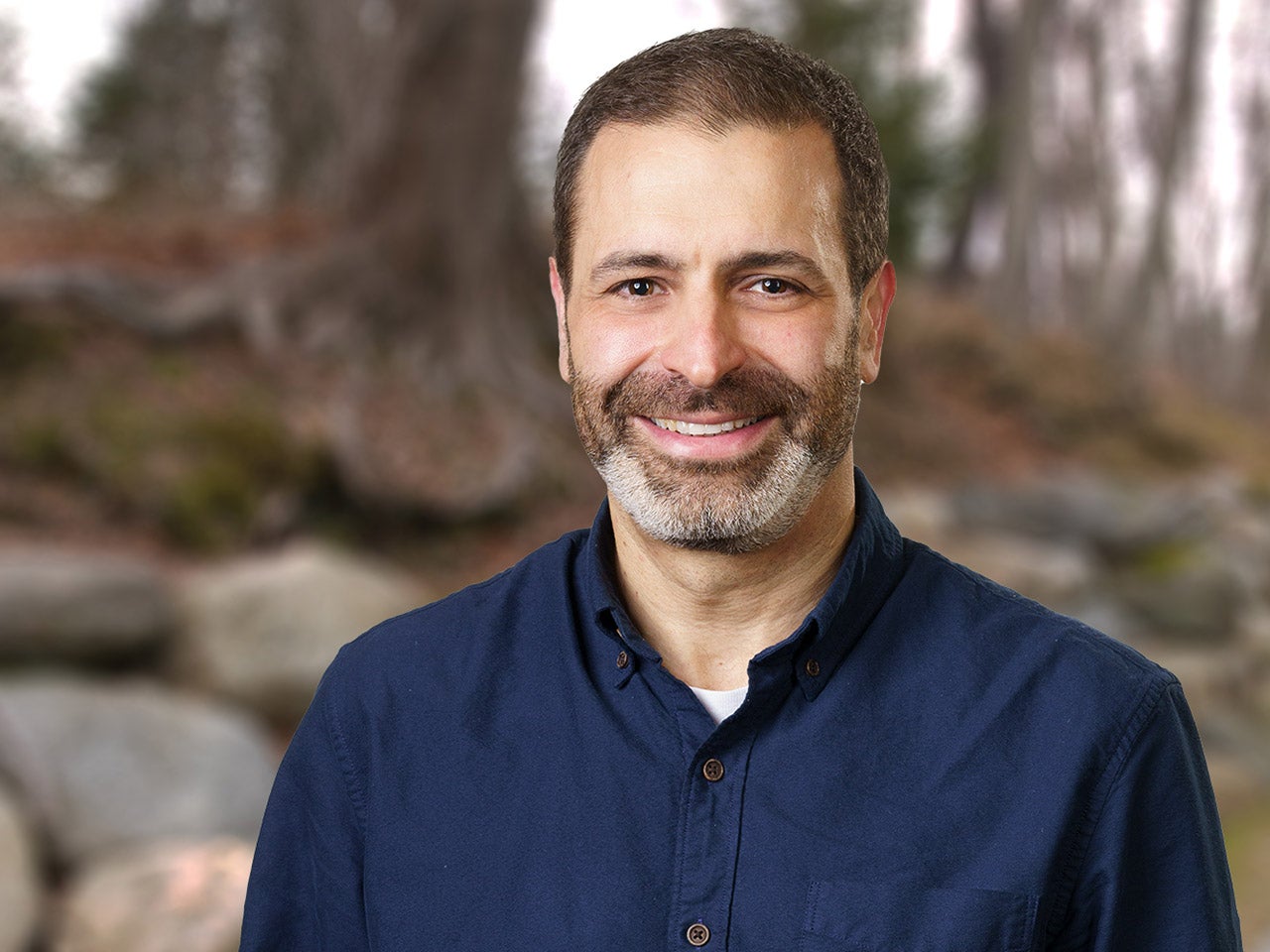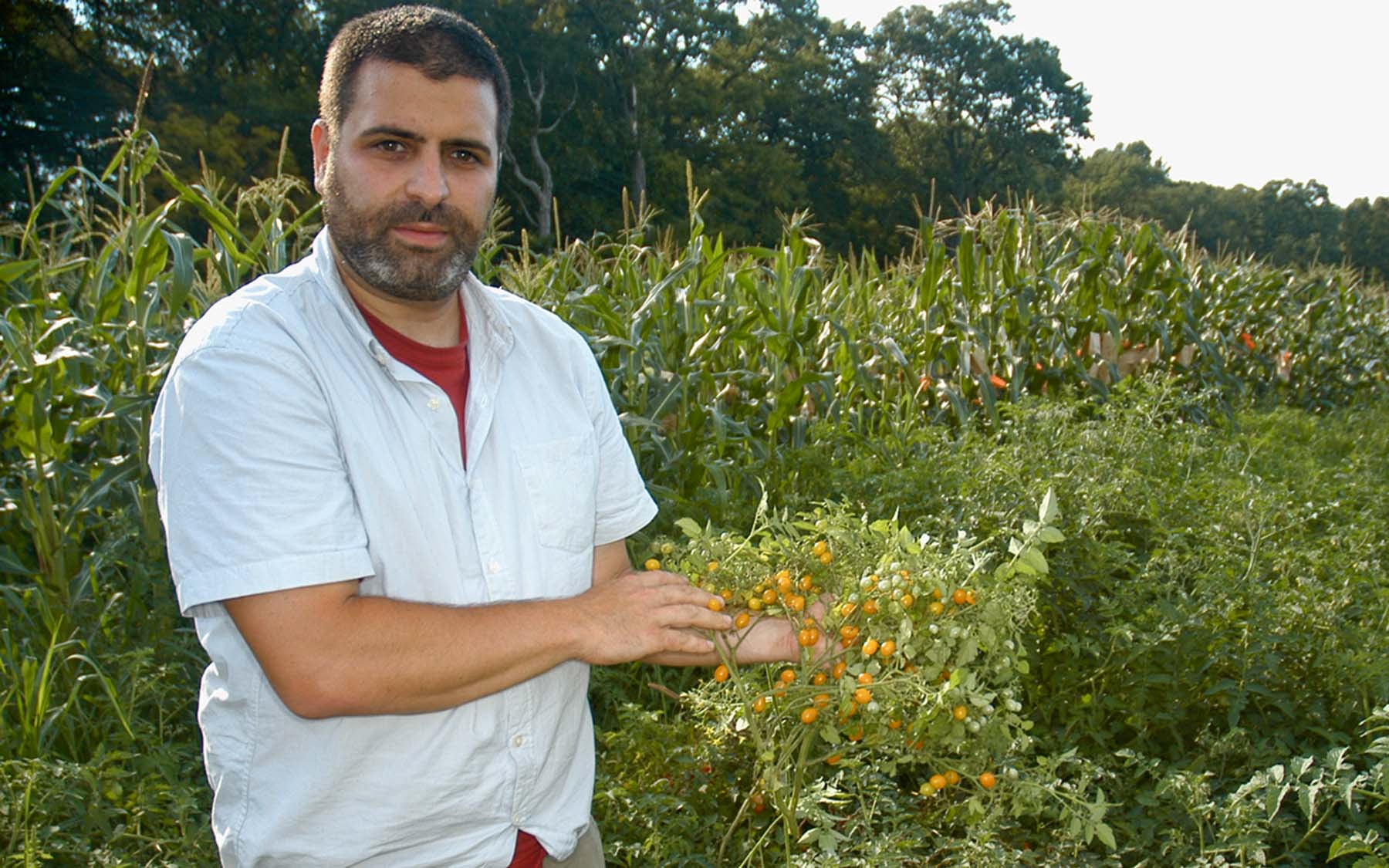An array of gene variants provides “breakthrough benefits” in tomato yield for breeders; other crops next
Cold Spring Harbor, NY — Scientists at Cold Spring Harbor Laboratory (CSHL) today announced a new way to dramatically increase crop yields by improving upon Mother Nature’s offerings. A team led by Associate Professor Zachary Lippman, in collaboration with Israeli colleagues, has discovered a set of gene variations that can boost fruit production in the tomato plant by as much as 100%.

Plant breeders will be able to combine different gene variants among the set to create an optimal plant architecture for particular varieties and growing conditions. The set of mutations will enable farmers to maximize yield in tomatoes and potentially many other flowering plants, including staple crops like soybeans.
“Traditionally, plant breeders have relied on natural variation in plant genes to increase yield, but yield gains are plateauing,” Lippman notes. “There is an immediate need to find new ways for plant breeders to produce more food.” Worldwide more than 842 million people do not receive adequate nourishment, about 1 person in 8 alive today. The cost of food is expected to increase and hunger is likely to become more widespread as the global population expands to beyond 9 billion by 2050.
Ancient humans and early plant breeders recognized that selecting plants with modified architectures could have a major impact on the amount of fruit they produce. In general scientific terms, Lippman explains, “Plant architecture results from a delicate balance between vegetative growth—shoots and leaves—and flower production. To increase crop yields, we want plants to produce as many flowers and fruits as possible, but this requires energy—energy that is produced in leaves.”
In tomatoes and all other flowering plants, the balance between vegetative growth and flowers is controlled by a pair of opposing hormones, called florigen and anti-florigen. Prior work by Lippman and Israeli colleagues showed that a mutation in florigen can shift the balance between vegetative growth and flowering, modifying plant architecture in a way that increases yield. This suggested that the balance between florigen and anti-florigen might not yet be optimal in tomato plants, despite centuries of breeding with natural variants.

In a study published today in Nature Genetics, Lippman’s team identifies an array of new gene mutations that allow, for the first time, a way to fine-tune the balance of florigen to anti-florigen. This maximizes fruit production without compromising the energy from leaves needed to support those fruits. “We mixed and matched all of the mutations,” explains Lippman. “And we were able to produce plants with a broad range of architectures. Together, our collection of mutations forms a powerful toolkit for breeders to pinpoint a new optimum in flowering and architecture that can achieve previously unattainable yield gains.”
The breakthrough benefit of the toolkit, says Lippman, is that it allows farmers to customize genetic variations for particular varieties and growing conditions. “For example, we found that different combinations boost yields for cherry tomatoes and other fresh-market tomatoes compared to tomatoes that are processed for sauce, ketchup, and other canned products. We’ve tested this in multiple genetic backgrounds, in multiple years, and in multiple environments—and the toolkit always provides a new maximum yield.”
These results are likely to be broadly applicable to other flowering crops, Lippman says. Mutations that affect florigen and anti-florigen are already known to play a role in controlling plant architecture for the oil crops rapeseed and sunflower, and can be applied in those. But the team is anxious to move on to critical food crops, specifically soybeans, which share many growth similarities with tomato.
Written by: Jaclyn Jansen, Science Writer | publicaffairs@cshl.edu | 516-367-8455
Funding
This work was supported by grants from a European Research Council-Advanced (ERC), the Israeli Science Foundation (ISF), the Binational Agricultural and Research Fund (BARD), and the National Science Foundation (NSF) Plant Genome Research Program.
Citation
“Optimization of crop productivity in tomato using induced mutations in the florigen pathway” appears online in Nature Genetics on November 2, 2014. The authors are: Soon Ju Park, Ke Jiang, Lior Tal, Yoav Yichie, Oron Gar, Dani Zamir, Yuval Eshed, and Zachary Lippman. The paper can be obtained online at: http://www.nature.com/ng/index.html
Principal Investigator

Zachary Lippman
Professor & HHMI Investigator
Jacob Goldfield Professor of Genetics
Director of Graduate Studies
Ph.D., Watson School of Biological Sciences at Cold Spring Harbor Laboratory, 2004
